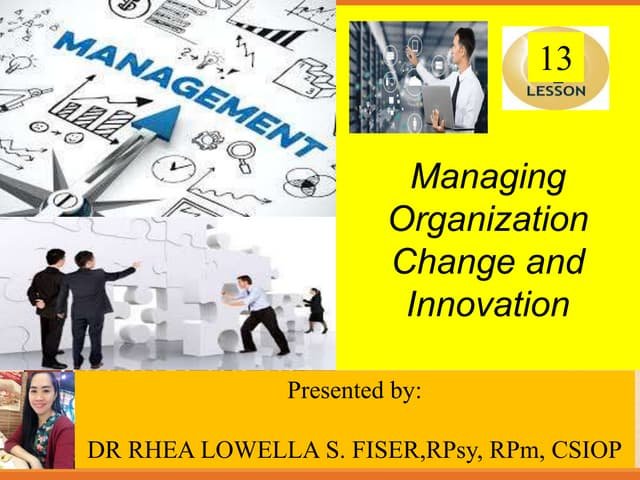Managing change and innovation in schools is essential for adapting to evolving educational needs and improving student outcomes. Effective leadership, clear communication, and strategic planning are crucial in navigating the complexities of change. This article explores strategies for managing change and innovation in educational settings, providing insights into best practices and overcoming common challenges.

Understanding the Need for Change
Identifying Areas for Improvement
Change in schools often stems from the need to address areas requiring improvement or to adapt to new educational trends. Administrators and educators must first identify these areas through data analysis, feedback from stakeholders, and evaluation of current practices. Recognizing the need for change helps set a clear direction and justify the implementation of new initiatives.
Moreover, understanding the specific challenges or opportunities that prompt the need for change allows for targeted solutions and more effective planning. Therefore, a thorough assessment of existing conditions is crucial for successful change management.
Setting Clear Objectives
Once the need for change is identified, setting clear and achievable objectives is essential. Objectives should be specific, measurable, attainable, relevant, and time-bound (SMART). Clear objectives provide a roadmap for the change process and help ensure that all stakeholders understand the goals and expectations.
Additionally, well-defined objectives facilitate the development of action plans and help track progress throughout the implementation phase. To add on, setting milestones and benchmarks allows for ongoing evaluation and adjustment as needed.
Developing a Change Management Plan
Creating a Strategic Plan
A strategic plan outlines the steps and resources needed to implement change effectively. This plan should include:
- Goals and Objectives: Clearly defined targets and outcomes.
- Action Steps: Specific tasks and responsibilities.
- Timeline: A schedule for implementation and evaluation.
- Resources: Required materials, training, and support.
Furthermore, a strategic plan helps align efforts and ensure that all aspects of the change process are addressed. By following a structured plan, schools can manage change more efficiently and minimize disruptions.
Engaging Stakeholders
Engaging stakeholders is critical for the successful implementation of change initiatives. This includes involving teachers, students, parents, and community members in the planning process. To add on, effective communication and collaboration help build support and address concerns early on.
Moreover, soliciting input from stakeholders can provide valuable insights and foster a sense of ownership and commitment to the change process. Therefore, creating opportunities for feedback and participation is essential for gaining buy-in and ensuring the success of the initiative.
Implementing Change and Innovation
Communication and Transparency
Clear communication and transparency are key components of successful change management. Administrators should keep stakeholders informed about the goals, progress, and impact of the change initiative. Regular updates and open channels for feedback help address concerns and maintain trust.
Additionally, transparent communication helps manage expectations and prevent misinformation. By providing clear and accurate information, administrators can reduce resistance and foster a positive attitude towards change.
Training and Support
Providing adequate training and support is essential for ensuring that staff and students can effectively adapt to new practices or technologies. This may include professional development workshops, hands-on training sessions, and ongoing support resources.
Moreover, addressing any challenges or difficulties promptly helps facilitate a smoother transition. By investing in training and support, schools can enhance the overall effectiveness of the change initiative and ensure that all stakeholders are equipped to succeed.
In the ever-evolving landscape of education, managing change requires a blend of strategy and adaptability, much like navigating other dynamic fields. For insights into structured approaches, some professionals look to resources like www.bestaubettingsites.com for analysis on systematic processes. The principles of innovation discussed at Granbury Square Cafe emphasize creating a supportive culture for new ideas. Just as effective leadership guides transformation in schools, clear frameworks are vital for progress in any sector. Embracing change is ultimately about fostering resilience and forward-thinking in every community.
Evaluating and Adjusting
Monitoring Progress
Ongoing evaluation is crucial for assessing the effectiveness of the change initiative. Monitoring progress involves collecting and analyzing data related to the objectives and outcomes of the change. This helps identify successes, challenges, and areas for improvement.
Additionally, regular evaluations provide opportunities for adjusting strategies and making necessary modifications. By staying informed about the impact of the change, administrators can make data-driven decisions and ensure that the initiative remains aligned with its goals.
Celebrating Successes
Recognizing and celebrating successes is important for maintaining motivation and reinforcing positive outcomes. Acknowledging achievements helps build morale and encourages continued support for the change initiative. Furthermore, celebrating milestones can provide a sense of accomplishment and highlight the benefits of the change.
Overcoming Challenges
Addressing Resistance
Resistance to change is a common challenge in any organizational setting. To address resistance, administrators should:
- Understand Concerns: Listen to feedback and address specific concerns.
- Provide Support: Offer resources and assistance to help individuals adapt.
- Communicate Benefits: Clearly articulate the positive impacts of the change.
Moreover, involving resistant stakeholders in the change process can help address their concerns and build trust. By addressing resistance proactively, schools can minimize disruptions and facilitate a smoother transition.
Managing Uncertainty
Change often brings uncertainty and discomfort. To manage uncertainty, administrators should provide clear information about the change process, including timelines and expected outcomes. Additionally, offering support and reassurance helps individuals navigate the transition with confidence.
Furthermore, being transparent about potential challenges and solutions helps manage expectations and reduce anxiety.
Conclusion
Managing change and innovation in schools requires strategic planning, effective communication, and ongoing support. By understanding the need for change, developing a comprehensive plan, engaging stakeholders, and evaluating progress, schools can successfully implement new initiatives and enhance educational outcomes. Overcoming challenges such as resistance and uncertainty is also crucial for ensuring a smooth transition. Through careful management and a focus on positive outcomes, schools can adapt to evolving needs and drive continuous improvement.










